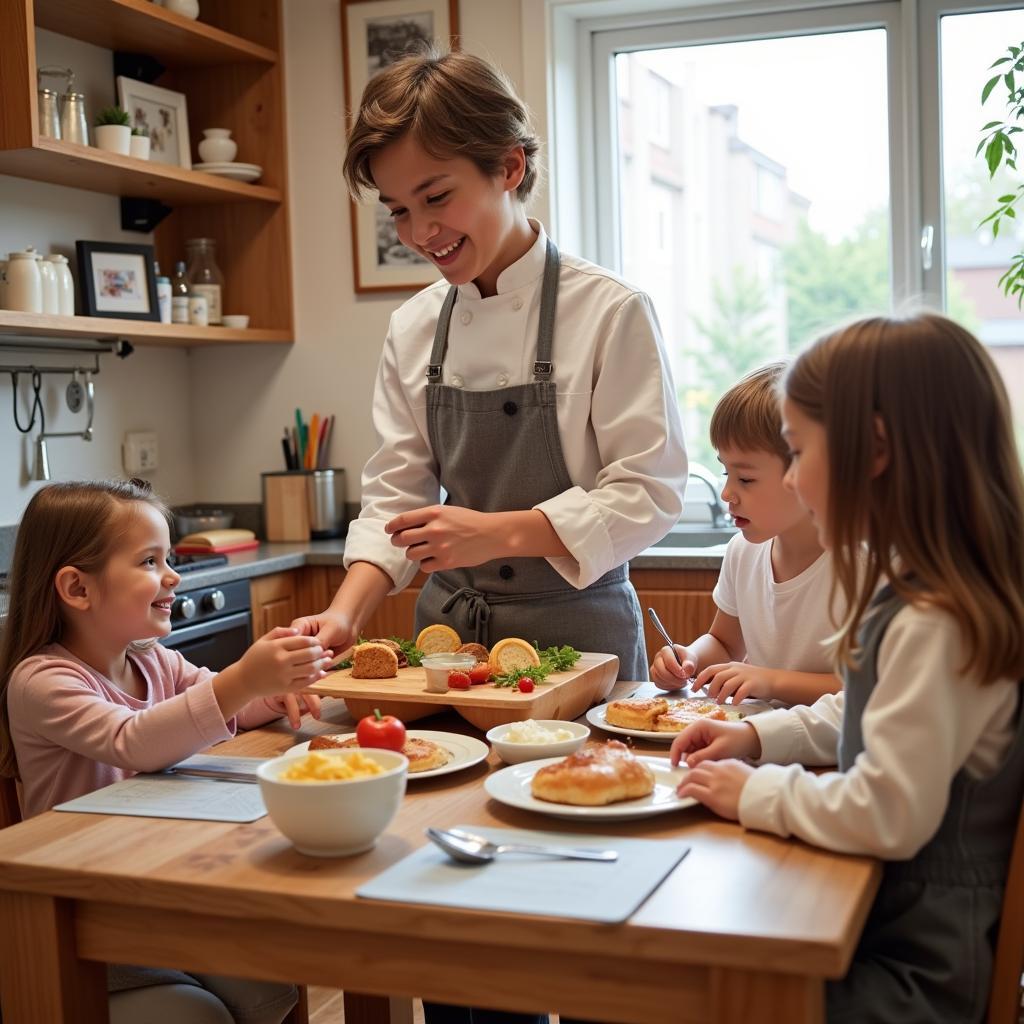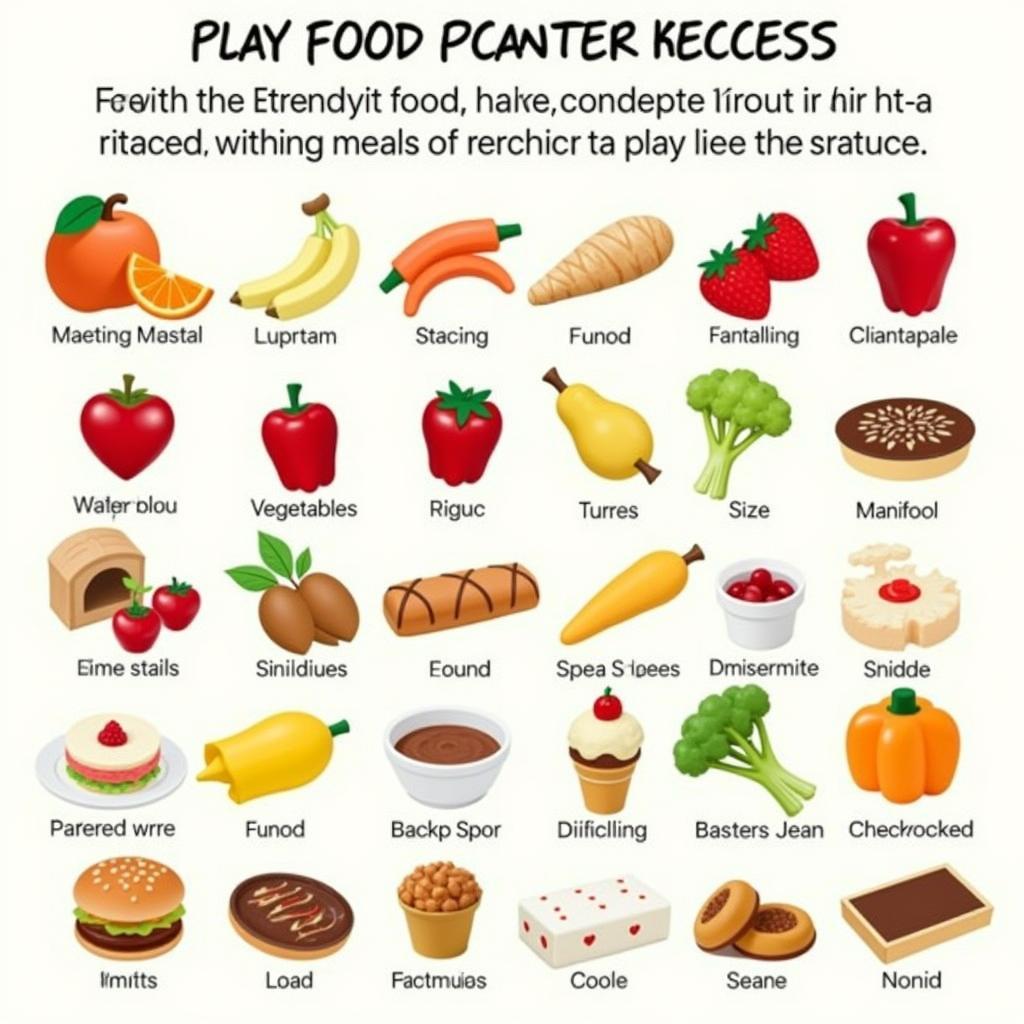Play kitchens are more than just adorable additions to a child’s playroom; they’re portals to a world of imagination, creativity, and learning. And what’s a play kitchen without a delicious assortment of play food and accessories to complete the experience? From colorful plastic fruits and vegetables to intricately detailed wooden pretend food, the options are as diverse as a real chef’s pantry.
Why Play Kitchen Food and Accessories Matter
Engaging with play food and accessories offers a smorgasbord of developmental benefits for children of all ages. It helps nurture their creativity and imagination as they whip up pretend culinary masterpieces. Let’s delve into the specific advantages:
1. Fine Motor Skill Development
Slicing a pretend loaf of bread or carefully arranging toy fruits on a plate might seem like simple play, but these actions are instrumental in developing a child’s fine motor skills. The act of grasping, manipulating, and maneuvering these miniature items strengthens the muscles in their hands and fingers, preparing them for essential tasks like writing, drawing, and buttoning clothes.
2. Language and Communication Skills
Play kitchens transform into bustling restaurants and cafes as children interact with their peers or family members. Ordering food, pretending to read menus, and describing their culinary creations encourages language development and enhances communication skills.
 Kids Role-Playing a Restaurant Scenario in their Play Kitchen
Kids Role-Playing a Restaurant Scenario in their Play Kitchen
3. Social and Emotional Growth
Sharing ingredients, taking turns as the chef, and negotiating pretend transactions within the context of a play kitchen fosters social skills and emotional intelligence. Children learn to cooperate, compromise, and navigate social dynamics in a safe and enjoyable environment.
4. Cognitive Development
From sorting and counting ingredients to following pretend recipes, play kitchens offer ample opportunities for cognitive development. Children start understanding concepts like colors, shapes, sizes, and even early math skills as they measure ingredients or divide pretend food amongst their imaginary guests.
Choosing the Right Play Food and Accessories
Selecting the right play food and accessories can make all the difference in a child’s play experience. Here are some factors to consider:
1. Material: Play food and accessories come in a range of materials, from durable plastic to sustainable wood. Consider your child’s age and play style when making a choice.
“When choosing play food, it’s crucial to prioritize safety and durability, especially for younger children who might explore objects through mouthing,” advises Dr. Sarah Miller, a child development expert.
2. Realism: While bright, colorful options are visually appealing, some children are drawn to more realistic-looking wooden pretend food, which can enhance their imaginative play.
3. Variety: A diverse selection of play food, from fruits and vegetables to complete meals, allows children to explore various culinary scenarios and keeps their play engaging.
 Assortment of Different Play Food Items
Assortment of Different Play Food Items
Creating a World of Play
A well-stocked play kitchen, complete with engaging accessories, sets the stage for endless fun and learning:
- Food-Themed Fabric: Incorporate food-themed fabric into the play area, creating tablecloths, aprons, or even curtains to enhance the immersive experience.
- Doll Mini Food: For children who love playing with dolls, doll mini food adds a delightful touch, allowing them to host miniature feasts for their beloved companions.
- Food Service Supply Store: Enhance the realistic play by organizing a trip to a food service supply store to gather child-friendly supplies like chef hats, aprons, or even play money to encourage imaginative restaurant scenarios.
Play Kitchen Food and Accessories: A Recipe for Fun and Learning
Play kitchens, brimming with enticing play food and accessories, are more than just toys—they’re dynamic learning tools that nurture a child’s development in multifaceted ways. By providing children with the tools to mimic adult activities, we empower them to learn, grow, and express themselves in a world crafted by their boundless imaginations.
Remember to prioritize safety when choosing play food and accessories, opting for age-appropriate items and supervising younger children during playtime.
FAQs about Play Kitchen Food and Accessories
1. What age is appropriate for play kitchen sets?
Play kitchens are suitable for a wide range of ages, with options available for toddlers as young as 18 months up to older children.
2. What are the benefits of wooden play food?
Wooden pretend food often offers a more realistic aesthetic and tends to be more durable than plastic alternatives. It’s also a more sustainable option.
3. Is UV resin safe for making play food?
While UV resin can create realistic-looking play food, it’s essential to ensure it’s properly sealed and safe for children. Learn more about UV resin safety for play food here.
4. How can I encourage my child to play with their play kitchen?
Join in on the fun! Engage with your child, create stories together, and introduce new play scenarios to keep them engaged.
5. Where can I find unique and high-quality Play Kitchen Food And Accessories?
Specialty toy stores and online retailers often offer a wider selection of play kitchen accessories than traditional department stores.
Need assistance finding the perfect play kitchen food and accessories?
Contact us at Phone Number: 02437655121, Email: minacones@gmail.com or visit us at 3PGH+8R9, ĐT70A, thôn Trung, Bắc Từ Liêm, Hà Nội, Việt Nam. We have a dedicated customer support team available 24/7 to help you. Explore our other informative articles on play kitchens and toys to create a world of imaginative fun for your little one!